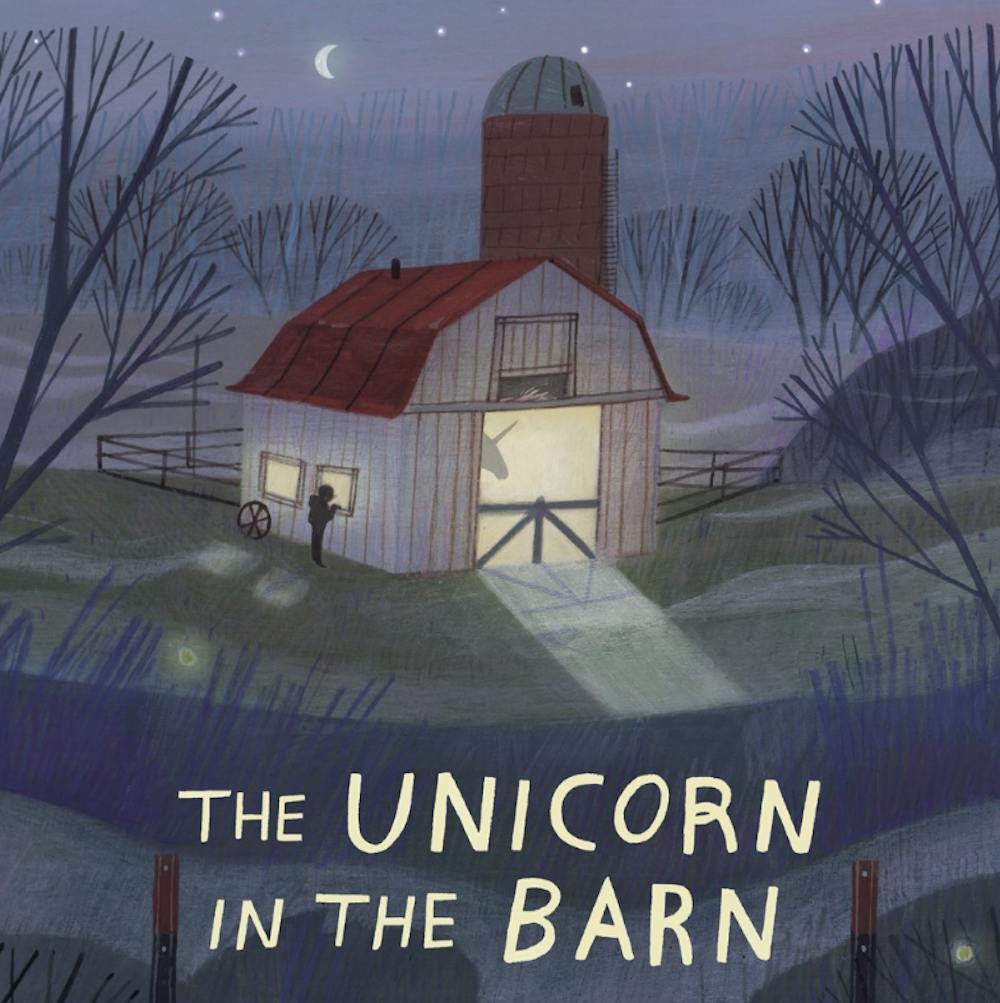In the past year, we’ve seen our fair share of unicorn trends, from hair and makeup to pool floats and Starbucks drinks. Now, the trend hits closer to home, with a Sanford employee featuring the mythical creature in her new book.
Jackie Ogburn, senior public relations manager for the Sanford School of Public Policy, recently released her first middle grade novel—the “Unicorn in the Barn,” a contemporary fantasy set on a farm in North Carolina. The main character, an 11-year-old named Eric, sees a unicorn in the woods near his home and discovers that the veterinarian living next door is treating magical animals along with ordinary ones.
“People like fantasies that are also very grounded, that feel like it could maybe happen to them,” Ogburn said about the book’s appeal.
As the story progresses, Eric befriends the vet and meets his daughter Allegra, learning that the unicorn is hurt and pregnant with twins. The vet hires Eric to help care for the unicorn but warns that they must keep her hidden. Eric develops an attachment to the unicorn and faces a number of ethical dilemmas throughout the plot, which centers around the power of family love and discovering your true self.
Ogburn explained that she got the idea for the book when her daughter, who had a stuffed unicorn, remarked that it might be difficult for a doctor to treat a unicorn because of its horn.
Although this is her first novel, she has written 10 popular picture books, including "The Bake Shop Ghost," "A Dignity of Dragons" and "The Magic Nesting Doll." She previously worked as a children's book editor in New York and currently edits for Alazar Press, a small publisher in Chapel Hill.
For “Unicorn in the Barn,” Ogburn realized that she needed to go beyond her typical children’s book length.
“This idea kept coming back to me, and I realized it needed the space of a novel,” she said. “I couldn’t get into all the things that were starting to interest me.”
She said writing the book took her about ten years in total. She would often work on the story for a bit and then get stuck and put it away for several months.
“With a picture book, I could hold the whole thing in my head at once,” she said. “With the novel, I kept writing outlines and would sit down to write and all these new things would come up.”
Picture books usually have at most about 32 pages, but “Unicorn in the Barn” clocks in at 304 pages in the hardcover edition. Ogburn described the transition as “going from being a really good sprinter to running a marathon.”
To ensure the animal details of her plot were realistic, Ogburn teamed up with Bobby Schopler, a staff veterinarian at the Duke Lemur Center, who would read her drafts and offer advice. He helped her with the details of the unicorn’s pregnancy.
The two would meet at Foster’s Market in Durham to discuss various aspects of unicorn physiology and anatomy, such as whether a newborn unicorn would be born with or without a horn. Schopler said he used his knowledge about goats and horses to come up with the best answers.
“It was really fun,” he said. “One of the things that veterinary medicine does for you is teaches you how similar animals are.”
Ogburn also volunteered at the Piedmont Wildlife Center to understand what it would be like to work for a vet and what kinds of things a young kid could realistically do. This ended up involving lots of cleaning and feeding.
“I figured wildlife was the closest I could get to treating a magical animal,” she said.
Although not a picture book, the novel features black and white illustrations by Rebecca Green at the beginning of each chapter, with some scattered through the book. Ogburn explained that she told Green to make the images as realistic as possible, down to the sizing of the unicorn and her babies.
Ogburn decided to make the main character a boy because most of the stories she had previously read about unicorns involved girls. She said she had to remind her editor that this wasn’t a sparkly unicorn, but one living in a barn.
“When I was first thinking about it, I thought about stories I know that are similar and how I can make mine different,” she said.
Unicorns aren't the only magical creature in Ogburn's barn. She also included magical creatures inspired by American folklore, including a squonk—an animal that is supposedly so ugly that if someone sees it, the creature bursts into tears and dissolves into a puddle of water.
Get The Chronicle straight to your inbox
Sign up for our weekly newsletter. Cancel at any time.
For the follow-up book, she plans to prominently feature a griffin—a half-eagle and half-lion creature—who bonds with the vet’s daughter Allegra.
“It’s not quite as popular as a unicorn, but I think they are quite magnificent creatures,” Ogburn said. “Allegra is very protective of the animals she takes care of, so that seems a good pairing for her.”
Schopler said he thinks the book has been so popular because people are attracted to how unusual unicorns are.
“Also they are probably more free than even wild animals because they have this added dimension of supernatural qualities like being able to fly,” he said.
There are also the pop culture trends that prominently feature unicorns, something Ogburn couldn’t have anticipated ten years ago.
“I think I lucked out in that unicorns seem to be having a moment,” she said.

